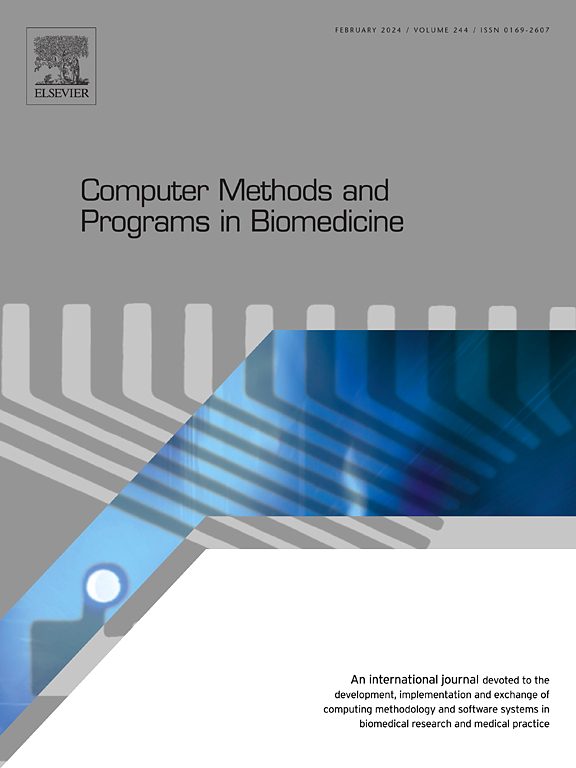基于多尺度交叉关注的ResNet的现代医疗系统中基于多模态用户认证的隐私保护与疾病预测框架
IF 4.8
2区 医学
Q1 COMPUTER SCIENCE, INTERDISCIPLINARY APPLICATIONS
引用次数: 0
摘要
背景/介绍疾病预测过程在一个人的“健康生活”中起着至关重要的作用。随着数据挖掘方法的迅速普及,疾病预测系统应运而生。医疗数据的安全传输和有效存储是当前医疗管理面临的主要难题。此外,隐私保护也受到了极大的关注,特别是对于高度敏感的医疗信息。对于疾病预测,已经开发了几种流行的隐私保护方法。“此外,尽管疾病预测系统是吉祥的,但其复杂性可能会限制实际使用,包括信息安全和预测效率。”方法采用多尺度交叉关注残差网络(Multi-scale Cross - Attention-based Residual Network, MCARNet)进行多模态用户身份验证,防止对医疗系统的非法访问。图像和信号转换成二维图像执行加密使用最优罗斯勒超混沌加密(ORHCE)。解密后的图像被提供给同一个MCARNet用于预测疾病。结果当k倍值为5时,模型的精度比DNN提高了7.3%,比RNN提高了12.3%,比LSTM提高了3.6%,比GRU提高了4.3%。结论采用基于启发式的混合深度学习模型进行多模态用户认证和疾病检测,提高了其认证和检测性能。本文章由计算机程序翻译,如有差异,请以英文原文为准。
A Joint Multimodal User Authentication-based Privacy Preservation with Disease Prediction Framework in Modern Healthcare System Using Multi-Scale Cross Attention-based ResNet
Background/Introduction
The disease prediction process plays a crucial part in a person’s life “to lead a healthy life.” The sudden spread of the data mining approach has generated the disease forecasting system. Secure transfer of medical data and effective storage is the major difficulty faced by recent healthcare management. Moreover, there is significant attention towards privacy preservation, especially for medical information, which is highly sensitive. For disease prediction, several prevailing privacy preservation approaches have been developed. “Moreover, although the disease prediction system is auspicious, its complexity may limit practical use, including information security and prediction efficiency.”
Methods
Multimodal user authentication is performed by a Multi-scale Cross Attention-based Residual Network (MCARNet) to prevent unauthorized access to the healthcare system. Images and signals are converted into 2D images for performing the encryption using the Optimal Rossler Hyper Chaotic Encryption (ORHCE). The decrypted images are given to the same MCARNet for predicting the disease.
Results
The precision of the developed model was enhanced by 7.3% of DNN, 12.3% of RNN, 3.6% of LSTM, and 4.3% of GRU when taking the k fold value as 5.
Conclusion
The multimodal user authentication and disease detection using the proposed heuristic-based hybrid deep learning model enhanced its authentication and detection performance.
求助全文
通过发布文献求助,成功后即可免费获取论文全文。
去求助
来源期刊

Computer methods and programs in biomedicine
工程技术-工程:生物医学
CiteScore
12.30
自引率
6.60%
发文量
601
审稿时长
135 days
期刊介绍:
To encourage the development of formal computing methods, and their application in biomedical research and medical practice, by illustration of fundamental principles in biomedical informatics research; to stimulate basic research into application software design; to report the state of research of biomedical information processing projects; to report new computer methodologies applied in biomedical areas; the eventual distribution of demonstrable software to avoid duplication of effort; to provide a forum for discussion and improvement of existing software; to optimize contact between national organizations and regional user groups by promoting an international exchange of information on formal methods, standards and software in biomedicine.
Computer Methods and Programs in Biomedicine covers computing methodology and software systems derived from computing science for implementation in all aspects of biomedical research and medical practice. It is designed to serve: biochemists; biologists; geneticists; immunologists; neuroscientists; pharmacologists; toxicologists; clinicians; epidemiologists; psychiatrists; psychologists; cardiologists; chemists; (radio)physicists; computer scientists; programmers and systems analysts; biomedical, clinical, electrical and other engineers; teachers of medical informatics and users of educational software.
 求助内容:
求助内容: 应助结果提醒方式:
应助结果提醒方式:


